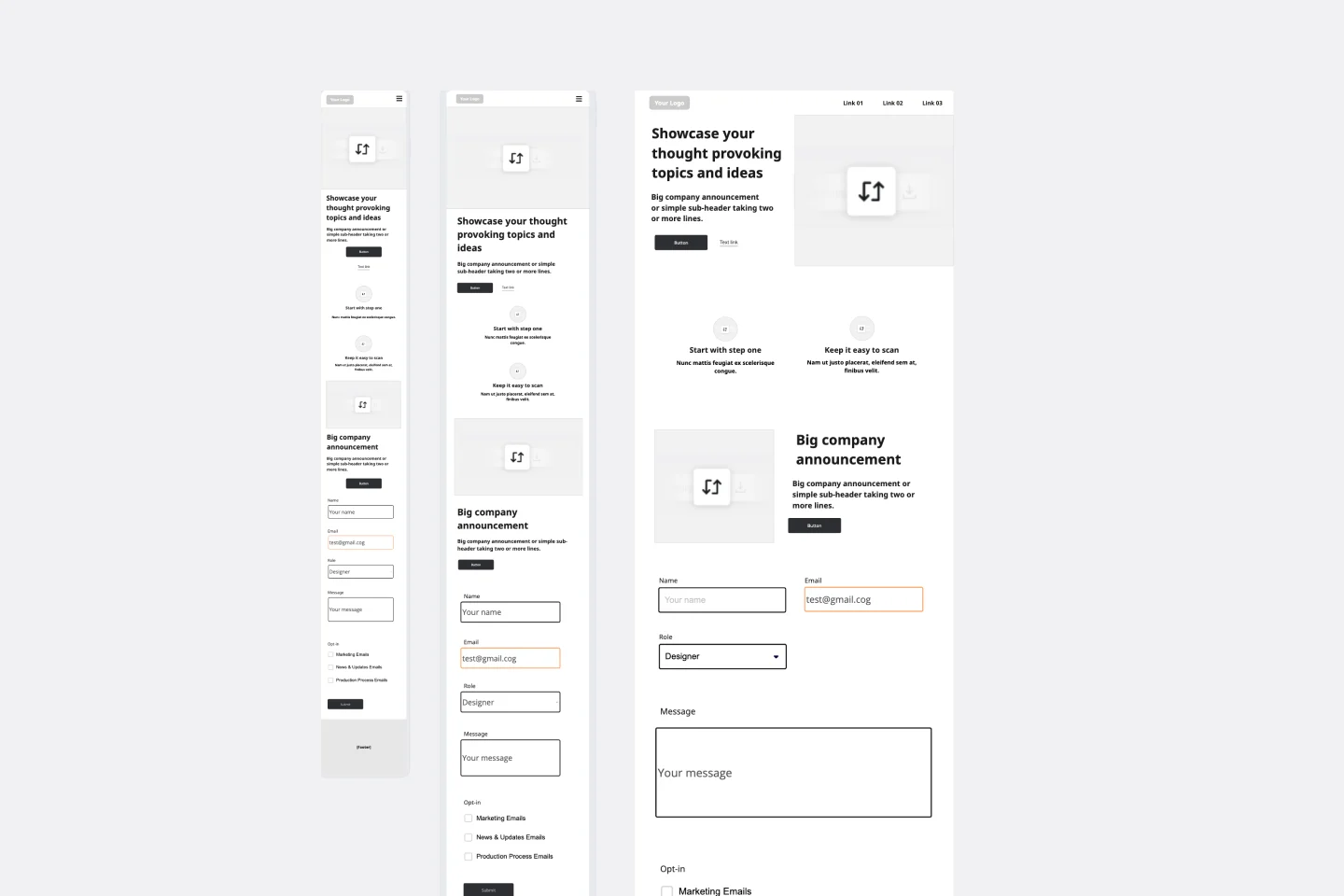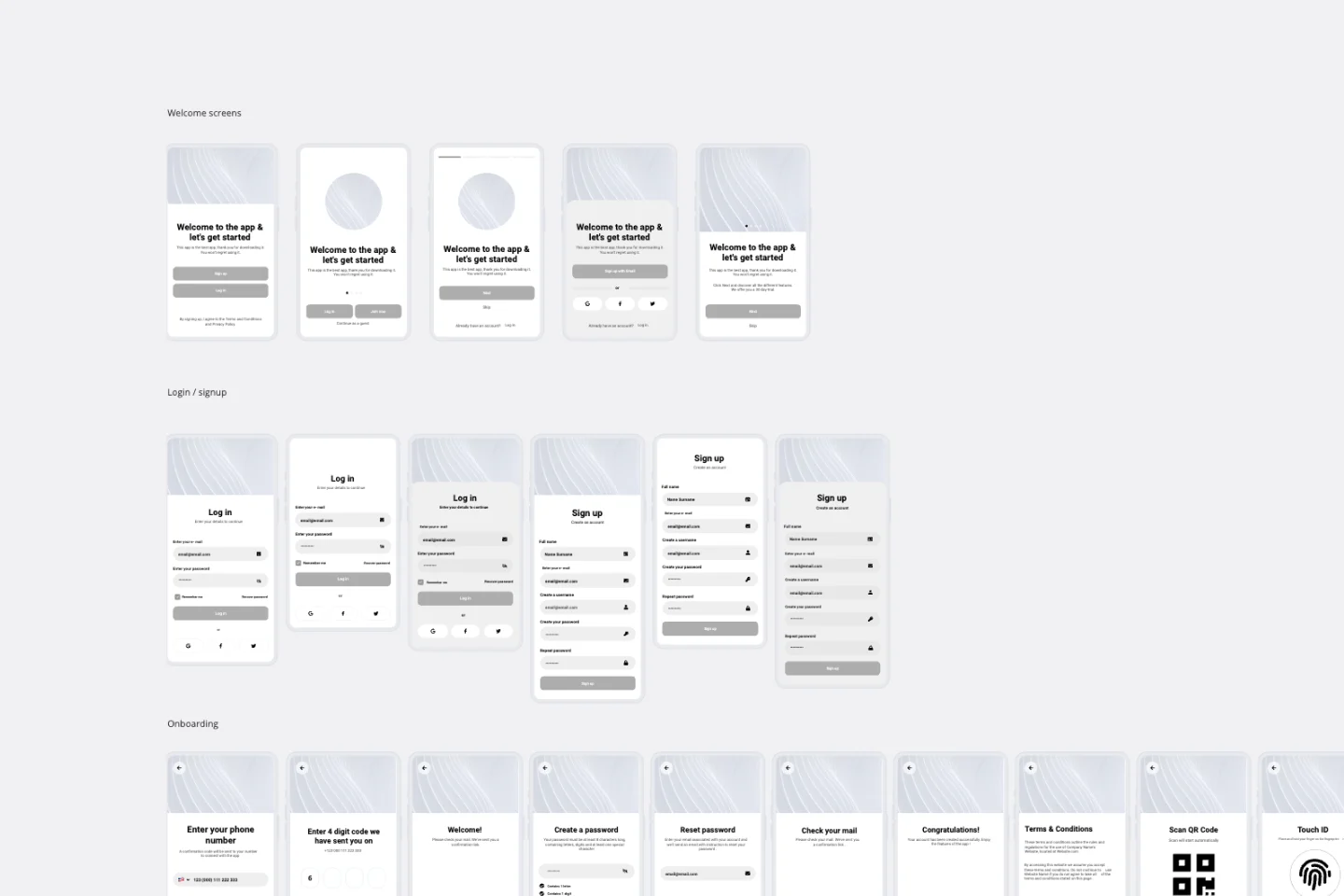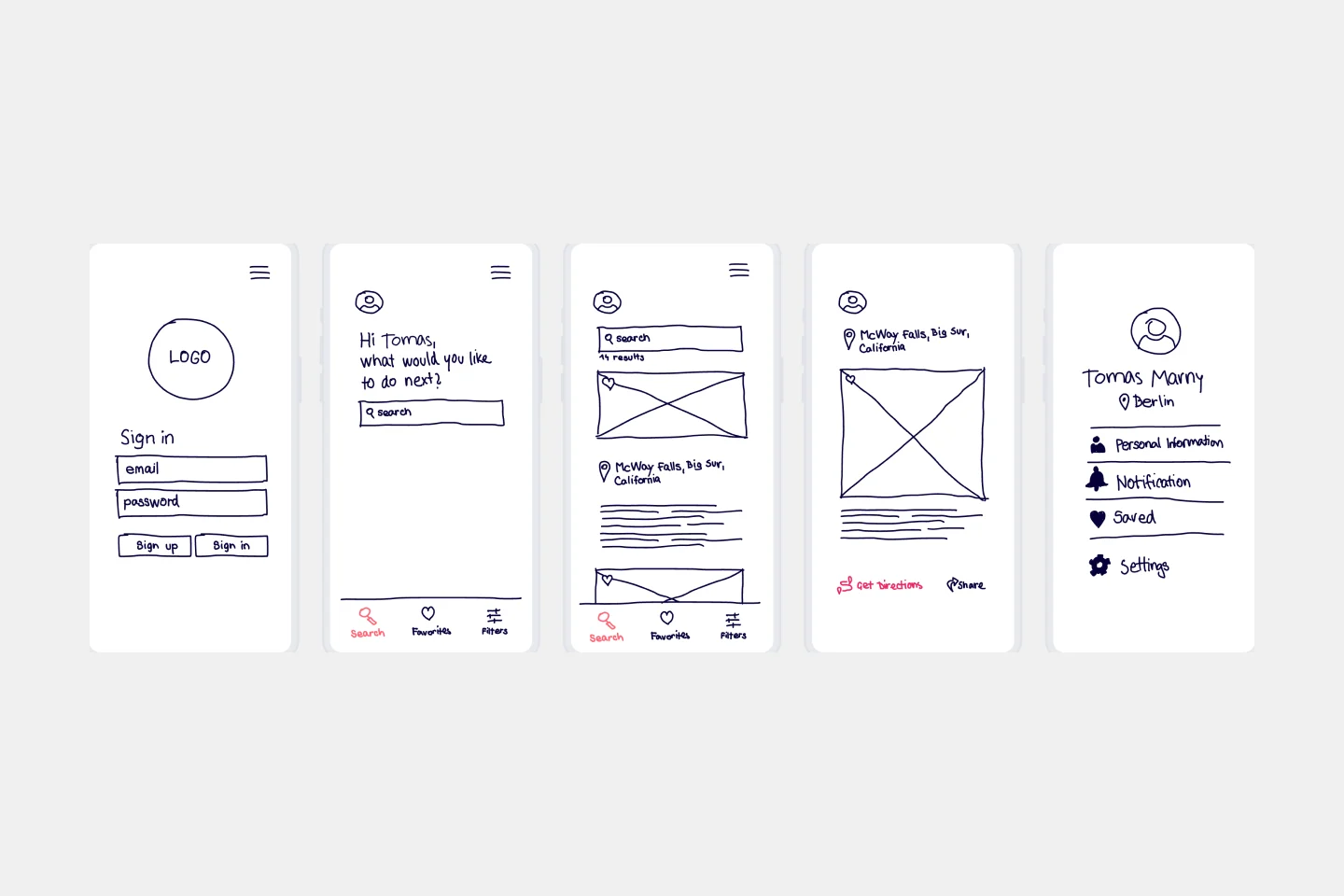About the Wireframe Templates Collection
Miro's wireframe templates collection helps you create quick and effective prototypes for websites, apps, and other digital products. Our templates are user-friendly and require no design experience, making them accessible to everyone from beginners to seasoned professionals. With a variety of templates available, you can easily map out your vision and iterate quickly, ensuring that your final product meets all your requirements.
Why you'll love our wireframe examples
Our wireframe examples are designed to make your design process smoother and more efficient. Here are some reasons why you'll love using them:
User-friendly and accessible: Our wireframe templates are easy to use, even for those with no design experience. This makes them perfect for beginners and seasoned professionals alike.
Highly customizable: You can easily adjust components to fit your specific needs, ensuring that your wireframes are tailored to your project.
Collaborative features: Miro's platform allows for real time or asynchronous feedback from stakeholders, making it easy to align your wireframes with your team's vision.
Variety of templates: With a wide range of templates available, you can quickly map out your vision and iterate efficiently.
Integration with other tools: Miro integrates with popular tools like IconFinder and Unsplash, allowing you to create comprehensive wireframes with ease.
Time-saving: The pre-made interactive UI components enable you to create low-fidelity prototypes in minutes, saving you valuable time in the design process.
Device-specific options: Choose from different device types (phone, tablet, browser) to ensure your wireframes are relevant to your project's requirements.
Export options: Once your wireframe is complete, you can easily export it as an image or PDF for sharing and presentation purposes.
These features make Miro's wireframe templates an essential tool for anyone looking to streamline their design process and collaborate effectively with their team.
How to use the wireframe templates in Miro
Select the template: Choose a template that suits your needs and add it to your board such as low fidelity wireframe template or user flow template.
Select the device: Choose the device you want to wireframe, whether it's a phone, tablet, or browser. Drop the component on the board to get started.
Add your wireframe components: Use the wireframe component library on the left menu bar, which includes about 60 UI design patterns. Select and customize the components that make sense for your project. Double-clicking a component allows you to edit it.
Add your wireframe icons: Use icons to represent the actions users will perform with your product. The built-in icon library offers a variety of options to save you time.
Share it: Once your wireframe is complete, you can request feedback by inviting people to your board or downloading your wireframe as an image or PDF.
Miro's wireframe templates and UI library help you create low-fidelity prototypes quickly and efficiently, making the design process smoother and more collaborative.












